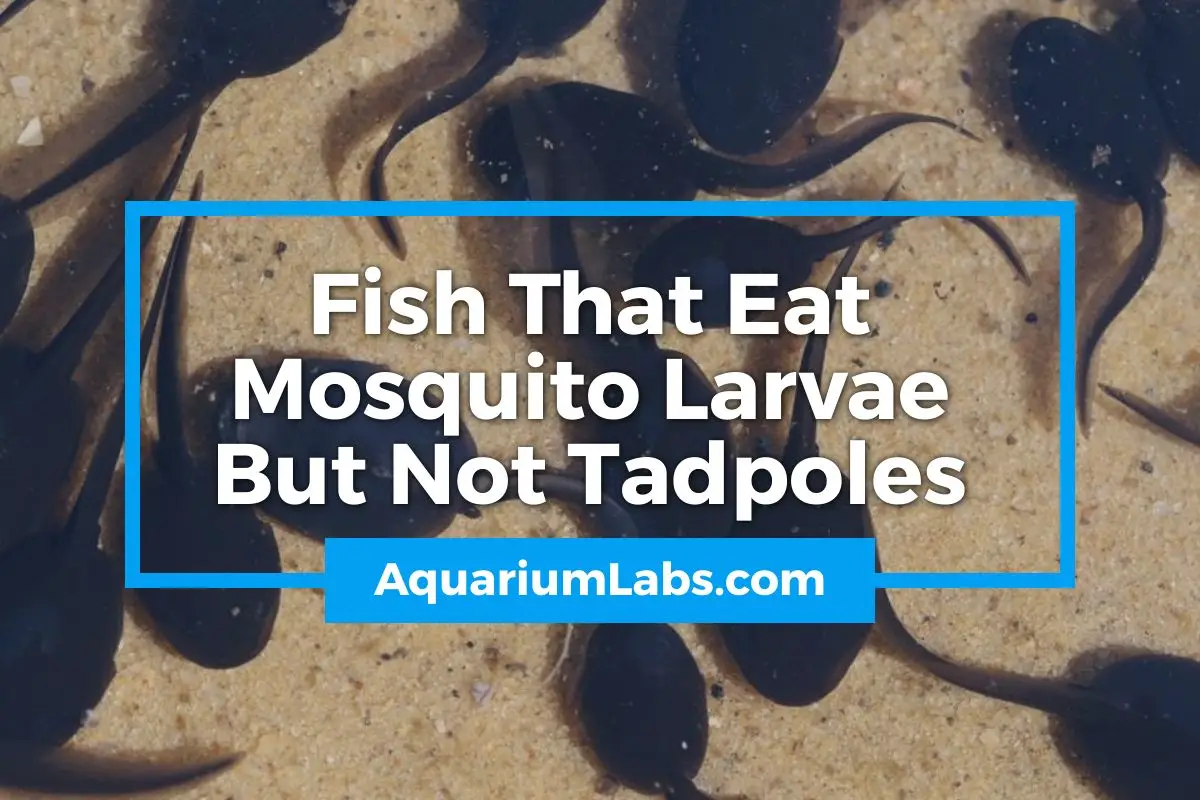Pond fish are more than just beautiful residents of our water gardens. They can serve a wide range of roles. Fish eat algae, clean the bottom… And some will eat mosquitoes and their larvae, which can make hanging out by a backyard pond less than fun.
So what are some fish that eat mosquito larvae but not tadpoles? And why is it important that we protect tadpoles in the first place?
Why Is It Important To Protect Tadpoles?
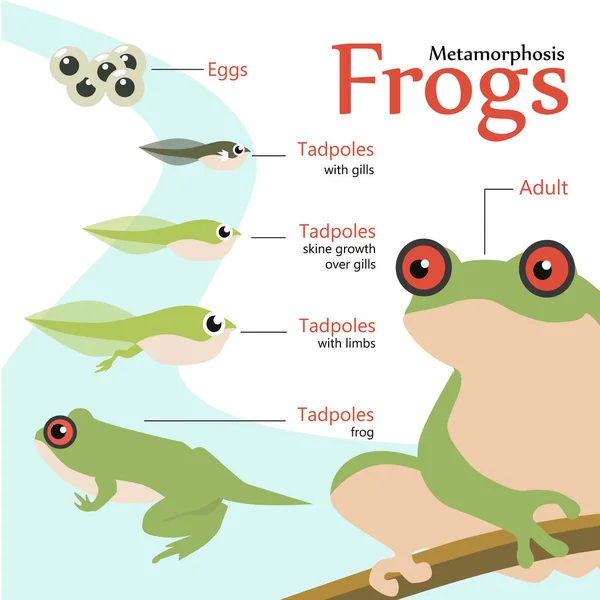
You may not be aware, but frogs around the world are in serious danger. Climate change, pollution, and habitat loss are all putting pressure on these ancient vertebrates. So choosing fish that eat mosquito larvae but not tadpoles can go a long way to ensuring more frogs survive to adulthood.
Chytrid fungus is another reason why protecting tadpole populations is more important than ever. This is a disease affecting frogs across species, bodies of water, and continents. It is an amphibian pandemic that is slowly wiping out frogs around the world.
This informational video does an excellent job of explaining in a short time why so many frog species are in danger of extinction. And may give you other ideas on how you can help.
10 Fish That Eat Mosquito Larvae And Not Tadpoles!
1. Mosquito Fish
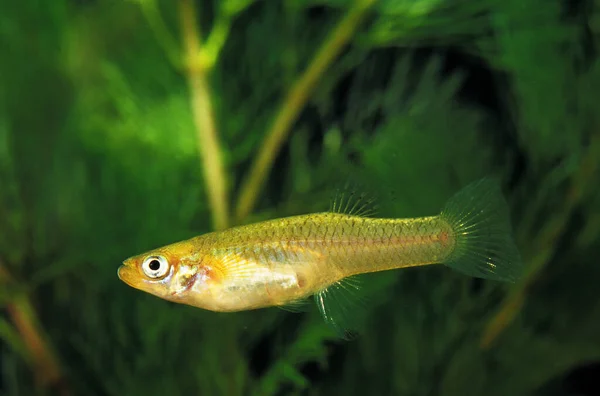
Most fish eat mosquito larvae, but few do so well a job as the aptly named mosquito fish! Gambusia fish are a species of livebearing fish, so they are closely related to guppies, platies, mollies, and so on.
Gambusia fish are found exclusively in North America, mostly in the Mississippi River basin. So there is a good chance they are native fish in your area. These small fish are excellent for ponds because they do just fine in cold conditions so long as the pond is too deep to become frozen solid during the winter.
Besides eating mosquito larvae, gambusia fish also eat algae, daphnia, insect larvae, and anything else they can find growing in your pond. They will have many, many babies, just like their guppy cousins. But they never grow large enough to eat tadpoles.
- Scientific Name: Gambusia affinis
- Origin: North America
- Length: 1 inch
2. Goldfish
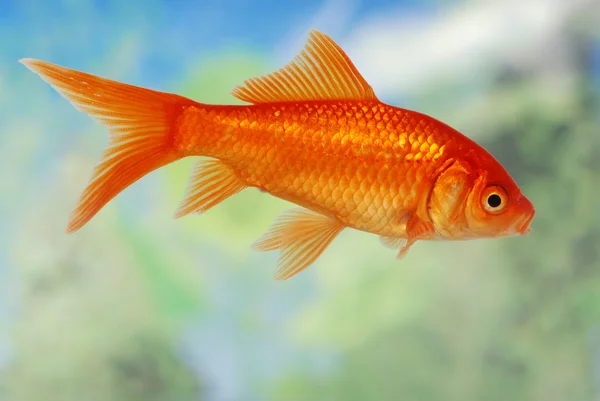
Goldfish are probably the most popular pond fish in the world. As a larger mosquito-eating fish, goldfish are omnivores. They love not only mosquito larvae but algae, snails, fish eggs, soft plants… But unfortunately, goldfish will eat tadpoles.
However, only large goldfish are capable of eating tadpoles alongside mosquito larva. If you stick to baby goldfish and move larger fish out of your pond as they grow, your tadpoles will remain safe!
Goldfish also get along well with any other fish, even smaller fish like mosquito fish. They will also eat other insects that are too large for your gambusia fish, like dragonfly larvae. And naturally, their brilliant metallic colors make them an eye-catching addition to any outdoor pond.
- Scientific Name: Carassius auratus
- Origin: East Asia
- Length: 8-12 inches
3. Guppies
Believe it or not, the common guppy is not only colorful and easy to keep but an effective predator of aquatic pests like tiny mosquito larvae. They consume mosquito larvae avidly and quickly breed babies that also grow up into hungry mosquito fish.
Sometimes guppies will eat their babies. But in a pond with plant growth and plenty of mosquito larvae, more than a few guppy fry will survive to adulthood.
Just keep in mind that guppies are tropical fish. So they don’t do well with winter in most temperate countries save the extreme south (Florida, Texas, California, etc.). But as summer residents, they will do a great job of keeping your mosquito population under control while adding a splash of color and activity!
- Scientific Name: Poecilia reticulata
- Origin: Venezuela & Colombia
- Length: 1 to 1-1/2 inches
4. Zebra Danios

Zebra danios are another small fish that loves to eat mosquitoes and their larvae. Danios are found mostly in South Asia (India, Myanmar, Pakistan, etc.) in temperate regions. So the majority are at least moderately cold-hardy (usually no colder than 50-55°F, depending on the species).
I recommend zebra danios because they love to eat mosquito larvae and are very easy to find and keep. Nearly all aquarium pet stores carry this species of fish because they are hardy and thrive in a wide range of water ph and temperatures.
Zebra danios are considered a model organism for the scientific world as well. They are used widely for genetic and biological research because they are so easy to keep!
Other danio fish can also be kept in cold conditions to eat mosquito larvae. Some other choices you might try include pearl, leopard, blue, and giant danio.
- Scientific Name: Danio rerio
- Origin: South Asia
- Length: 2 inches
5. Barbs

Many fish eat mosquito larvae, but few are as colorful and diverse as the barb group! As members of the Cyprinidae family, they are closely related to danios, goldfish, koi, and loaches. Barbs are omnivorous as well, feeding on anything organic they can find.
Larger species, such as the tinfoil barb (Barbonymus schwanenfeldii), would be willing to eat tadpoles as well as mosquito eggs and larvae. But most species are quite small, ranging from 1 to 4 inches. Too small to eat tadpoles.
You have a large selection of barbs to choose from, even in an average pet store. The rosy barb (Pethia conchonius) is a beautiful, cold-hardy species from Pakistan that eats mosquitoes. But you should choose carefully since many are true tropical fish that don’t do well when the water temperatures get too cold.
- Scientific Name: family Cyprinidae
- Origin: South & East Asia
- Length: variable
6. Minnows

The term “minnow” actually describes a large number of fish – the entire family of Cyprinidae, in fact! So goldfish, barbs, danios, and so on are all technically “minnows.” But colloquially, we think of a “minnow” as any sort of small fish. So small cyprinids that aren’t goldfish, danios, or barbs can all be thought of as “true minnows.”
One minnow to consider is the white cloud mountain minnow (Tanichthys albonubes). These little fish are from Vietnam and Southern China and thrive even when the water temperature gets as low as 40°F.
They do well with other fish so long as you keep them in schools. Most minnows are schooling fish, in fact. Mosquitoes and mosquito larvae are a major portion of their diet.
White cloud minnows aren’t especially colorful, however. So you might try keeping rosy red minnows, which are a vibrant pink and also grow significantly larger (up to 3 inches long). Rosy red minnows are sold as feeder fish for cichlids, turtles, and so on. However, they will live well in an outdoor pond and eat mosquito larvae alongside algae and other detritus!
- Scientific Name: family Cyprinidae
- Origin: Worldwide
- Length: variable
7. Paradise Fish

Paradise fish get their name from their naturally long fins and vibrant blue and red tones. They are one of the first aquarium fish to enter the hobby and must have seemed incredibly exotic at the time. Parasite fish eat mosquitoes as well and are cold-hardy, unlike the majority of their relatives.
Like most fish in the family Osphronemidae (bettas and gouramis), paradise fish also breathe air. This allows them to thrive in the same oxygen-poor environment that mosquito larvae and other insects live in to avoid predatory fish. So eating mosquitoes is something of a specialty for these fish!
Just keep in mind that paradise fish are fairly aggressive tropical fish. They will try chasing most of their tank mates around and are bullies. In a very small fish tank, this can be a real problem. But in a pond, they will have enough space that other fish will be able to avoid them with ease.
- Scientific Name: Macropodus opercularis
- Origin: Southeast Asia
- Length: 4 inches
8. Betta Fish
Believe it or not, common betta fish are some of the best fish that eat mosquitoes you will ever find. They target mosquitoes in all parts of the life cycle, from mosquito pupae to adult female mosquitoes looking to lay eggs at the surface. Bettas are also air-breathing fish and can easily live in hot, shallow water with low oxygen.
Many people think that bettas have to be kept alone because they are too aggressive towards other fish. In truth, they are most aggressive towards each other. Male bettas will attack each other viciously, even other breeds of betta. But they tend to ignore other fish as long as they don’t look similar to them.
Bettas are true tropical fish, however. If your pond is warm in the summer, they can make great temporary residents. But if water temperatures drop below 60-65°F in your area for an extended period, a betta should be moved indoors until the cold has passed.
- Scientific Name: Betta splendens
- Origin: Thailand
- Length: 3 inches
9. Pygmy Sunfish

Native fish that eat mosquito larvae are often a bit bland compared to exotic aquarium fish. But the pygmy sunfish group is a rare exception! These North American natives often come in striking blue, black, and brown patterns. They eat mosquito and insect larvae of all kinds. And they will readily survive winter in pond conditions.
The most colorful are the least cold-hardy, including the Everglades Sunfish (Elassoma evergladei). They live in the tropical tip of South Florida, where water temperatures don’t get below 40°F.
Stick to pygmy sunfish when choosing these fish. There are many other sunfish that will live in a pond. And many, like the pumpkinseed sunfish (Lepomis gibbosus), are quite colorful. But these larger species will gladly eat tadpoles as well as mosquitoes.
- Scientific Name: family Centrarchidae
- Origin: North America
- Length: 1 to 2 inches
10. American Flagfish
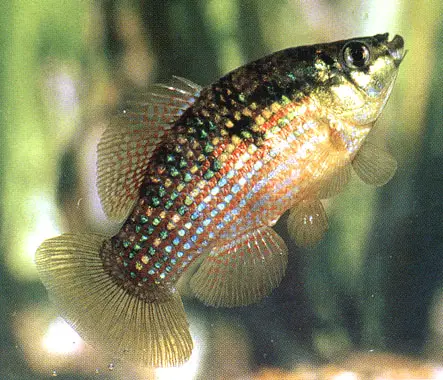
Last we have the American Flagfish, one of the new native fish that you can find in local pet stores. These are a species of killifish, a group of fish that love to eat mosquitoes and their larvae.
American flagfish are robust in body weight for such small fish. And when looking at them, it is easy to see how they get their name! The checkerboard pattern of spangles in red and greenish-blue is reminiscent of the national symbol.
As a native species that won’t eat tadpoles, American flagfish do well in pond conditions. Just make sure that they have some algae to nibble on since they are true omnivores as well.
- Scientific Name: Jordanella floridae
- Origin: Florida
- Length: 2 1/2 inches
Wrapping Up
There are many other fish that eat mosquito larvae as well. But these are the best options for mosquito population control that you will find in most pet stores.
Each of these fish also stays small enough (except adult goldfish) that tadpoles are in no danger from them. Ensuring that you get to do your part in mitigating the amphibian extinction crisis currently going on!
Interesting Reads:

